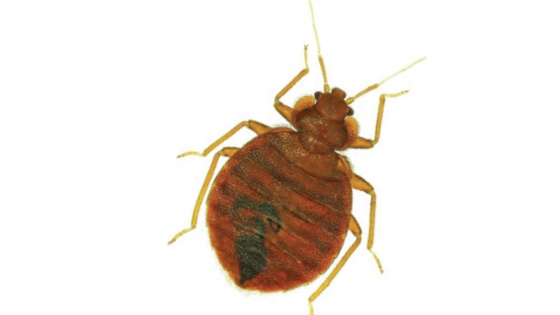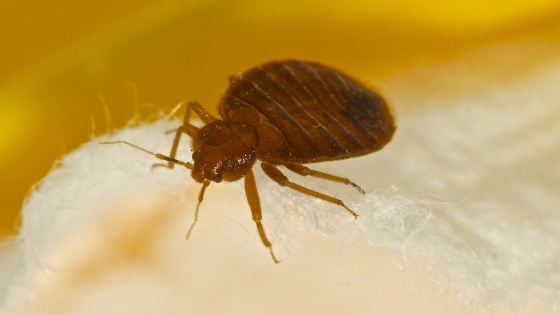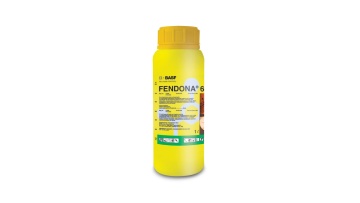Bed Bugs
Recent reports have claimed incidences have increased by over 500% in recent years and bed bugs certainly appear to be on the rise. A number of factors have been linked to this epidemic including increased international travel and immigration and the decreased use of residual insecticides for cockroach control.
There are several ways in which dwellings can become infested with bedbugs. People may acquire bedbugs at hotels or bed-and-breakfasts and bring them back to their homes in their luggage or they might pick them up by inadvertently bringing infested furniture or used clothing to their household.
The size of a bedbug infestation is very variable, largely dependant on the time elapsed from the initial infestation.
Treatment can be challenging with every crack and crevice within 15 – 20 feet of the host being a possible harbourage. Bedbugs are not known to be frequent carries of disease but are a pest due to the unpleasant irritation following their bites.
Latin name: | Cimex lectularis |
Length: | Approx. 6 mm at adult stage. |
Colour & description: | Are pale brown when unfed but brown when engourged with blood. Oval but flattened unless recently fed. Are wingless with a short head and long slender mouthparts. |
Habits & habitat: | Nocturnal parasite with all stages feeding on mammalian blood. Hide by day in cracks and crevices in beds, furniture, behind skirting boards emerging when hungry to find food. |
Life cycle: | up to 200 days |
Reproduction rate: | Following insemination females produce 2-3 eggs per day for life (several hundred eggs in her lifetime). |
Pinpointing the Problem
Wherever bed bug infestations are suspected, a thorough inspection of the main problem areas is vital to verify their presence. This should also identify all sites of activity and harborage for treatment. This is crucial because bed bugs are seldom active during the day and can shelter deep inside very narrow cracks and crevices.
Being small, the bugs, their eggs and fecal deposits are easy to overlook without the aid of a good torch and magnifying tool.
Key areas for inspection include:
- Tufts, seams, buttons & folds of mattresses
- Box springs, bed frames and covers
- Couches, chairs, cushions and curtains
- Window and door moldings
- Behind loose wallpaper and pictures
- Cracks in walls or hardwood flooring
- Under carpets along walls (tack strip)
- Wall voids (outlets & switch plates)
- Luggage, boxes and other portable items
Inspectors should be alert for the typical bed bug odor. They must also be prepared to move and take apart items of furniture, look inside electrical fittings and lift carpets along their edges so that no potential harborage sites are overlooked.
Wherever evidence of bed bugs is found, neighbouring rooms and other areas of the premises should also be inspected to establish the full extent of the infestation.
Preparing the Ground
With beg bugs, more than any other insect pest, good preparation of both the client and the premises ahead of treatment is central to success. Clients need to be prepared for the fact that an initial bed bug treatment may take five hours or more and involve considerable disruption, as well as the likelihood that repeat treatment will be required to achieve complete control.
They also need to be aware that the amount of time and number of treatments needed will increase with the degree of clutter in the environment and active client and occupant engagement. Co-operation in the process is essential to its cost-effectiveness.

Laundry
- Beds must be completely stripped down before insecticide treatment with all sheets, duvets, blankets, valances and other bedding placed in a bin liner and either laundered or professionally cleaned
- Curtains, soft furnishings and any clothing that may provide potential harborages should also be removed for thorough washing or dry cleaning
- To kill all bed bug stages, materials need to be washed in hot water (> 49º C for > 10 min.) with soap or detergent before drying in a hot dryer (> 60º C for > 20 minutes)
Vacuuming
- Although their eggs tend to be stuck too tightly to surfaces to be easily removed, vacuuming exposed surfaces or resting sites is valuable in removing a significant number of nymphs and adult bed bugs
- Using a high efficiency particulate air (HEPA) filtered vacuum will ensure the many allergens associated with bed bugs and their debris are also removed
- Vacuum bags should be removed immediately, sealed tightly inside a plastic bag and either incinerated or placed in the normal rubbish collection

Additional Considerations
Because bed bugs will move from treated to untreated areas it is important to ensure that any neighboring rooms are also treated. Although not a statutory requirement, access to treated areas should be restricted until the deposit is dry. The time this takes will depend on conditions with good ventilation speeding drying. As a rule, a one hour exclusion period should generally be sufficient.

Follow-Up
- Within approximately 10 days a return visit should be undertaken and the premises again inspected thoroughly
- Any areas where bed bugs persist should be re-treated along with any new areas where they may have moved to avoid the initial treatment
- This follow-up is essential as bed bug eggs will hatch after the initial treatment
- It is also valuable in identifying any areas of infestation that may have been overlooked initially
- Where infestations are heavy, a third visit after a further 10 days is recommended
- If possible, hotels should be requested to leave treated rooms unoccupied until the infestation is eliminated


